A Look Back at Chinese Bootleg Final Fantasy VII
It's nothing like the real thing
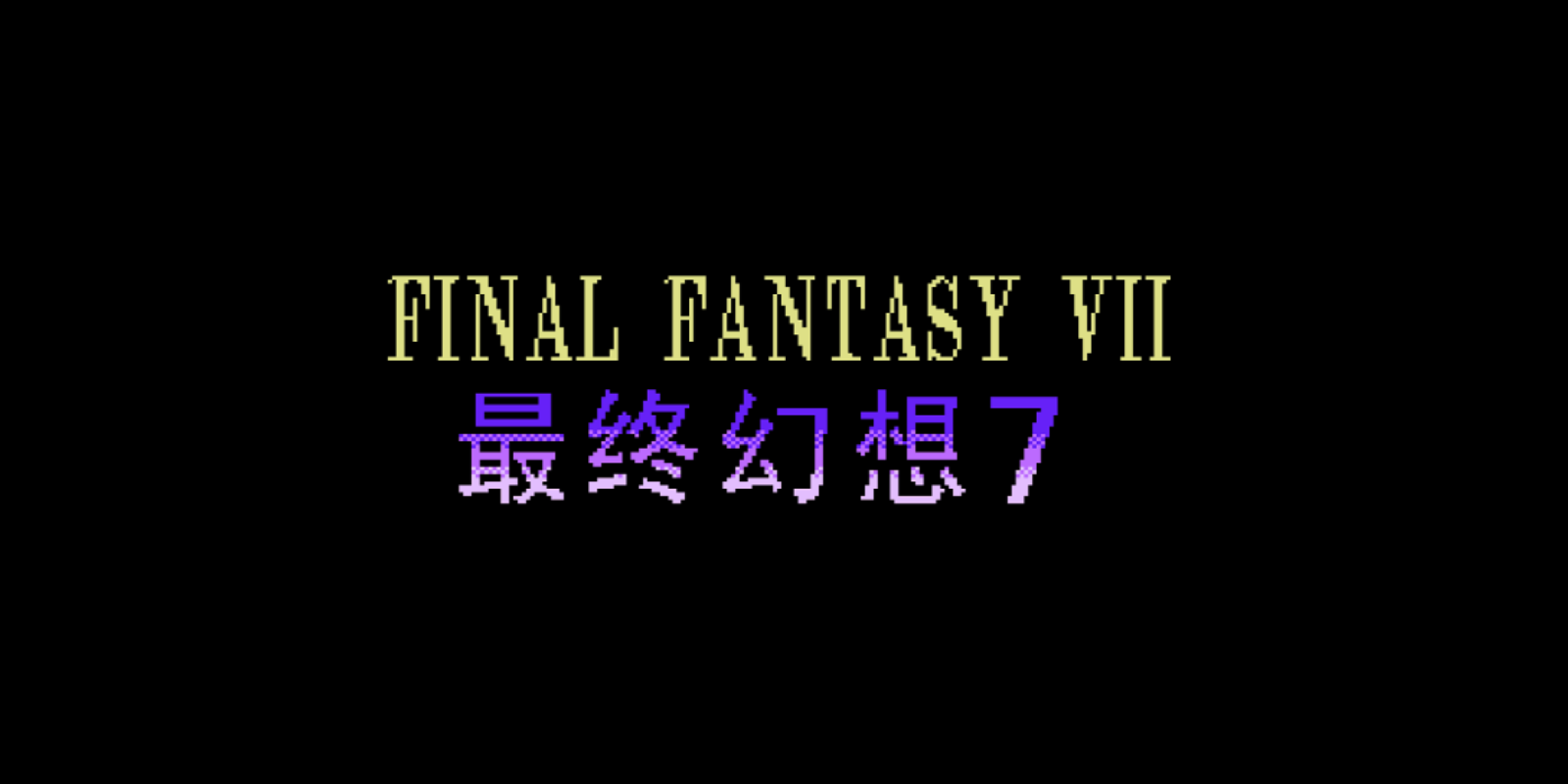
In 2008, Derrick Sobodash found a very strange game floating around on the Chinese internet. It was a NES (or Subor, to be technical) game called Final Fantasy 7 and it did indeed turn out to be a bizarre 8-bit take on Square's 1997 PSX classic.
Initially, most people figured that Sobodash was running some kind of hoax. At the time, people were not so familiar with the bootleg demake, the 3D game recreated in late 80s splendor. Many of you have seen or even played these games - they're a staple on knockoff emulation systems and questionable micro consoles. But 16 years ago, onlookers were laughing it off, at least until Sobodash got his hands on an actual cartridge.
The NES bootleg of Final Fantasy VII (a.k.a. Zuizhong Huanxiang 7, "officially" Final Fantasy VII Advent Children, hereafter referred to as CFF7) was released in 2005 by gray market developer Shenzhen Nanjing Technology. Most of their games are obscure knockoffs with no real presence outside of the closed-off Chinese market. CFF7 likely would have met the same fate were it not unearthed by a Westerner.
CFF7 was quickly translated and was, briefly, a bit of a fixation among the gaming press - an unofficial annex to the Compilation of Final Fantasy VII, which was still fresh at the time. Many critics had effusive praise for the people who fit all of FFVII onto an NES cart (for the record, CFF7 omits most of disc 2, but it's not like the critics finished this thing). But this strange little bootleg has also had quite an afterlife. For a decade and a half, people have been rediscovering it, reinterpreting it, even remaking it.
If we're going to talk about this game and its place in the greater culture, I have to play it first. Pity me.
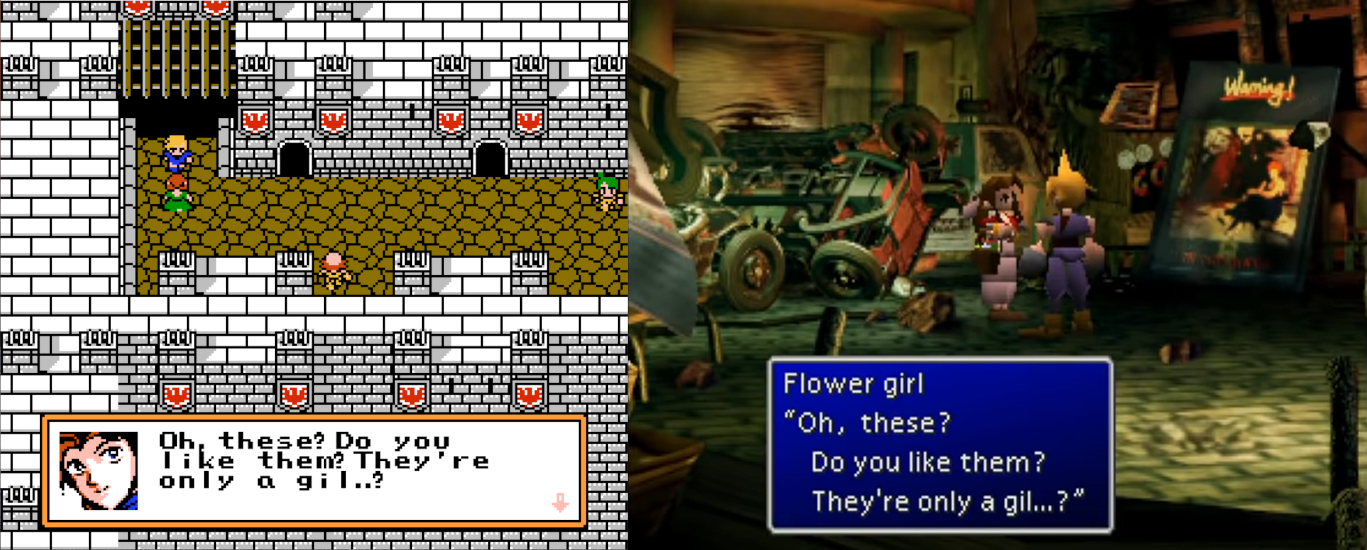
For the purposes of this story, I did what many who've written about CFF7 didn't do and played through the game - or at least as much as I could before the game wouldn't let me go any further. I really don't recommend that you do the same. Seriously, it's awful.
To start, CFF7 is remarkably unstable. This thing crashed with such gusto that I began to think that it was alive and malicious. I had to restart a few times because I saved right before an especially crash-prone part and couldn't advance any further.
CFF7 doesn't look anything like its predecessor because pretty much all of the assets are stolen. The dystopian slums of Midgar are quite pastoral, with the cozy faux-medieval houses and lines of trees that you'd see in any other JRPG of the era. That extends to the combat graphics as well. Cloud is, quite famously, a recolored version of the Fighter sprite from FFI with a big sword sticking out in front of him - a sword he uses to fight enemies stolen from other games from Final Fantasy history, none of which resemble the actual enemies from FFVII.
For the purposes of this story, I did what many who've written about CFF7 didn't do and played through the game - or at least as much as I could before the game wouldn't let me go any further.
Speaking of those enemies, there's no real attempt to balance the encounters to the part of the game you're in. A common complaint among the first Westerners to play CFF7 was that combat was slow and punitive, and they were dead-on. Enemy encounters are very random - you can come across enemies in the first dungeon that were clearly meant to show up some 15 levels later. Your reward for spending 5+ minutes hacking through these beefy enemies is an amount of experience and Gil comparable to what you'd get for a fight that you won on the first turn.
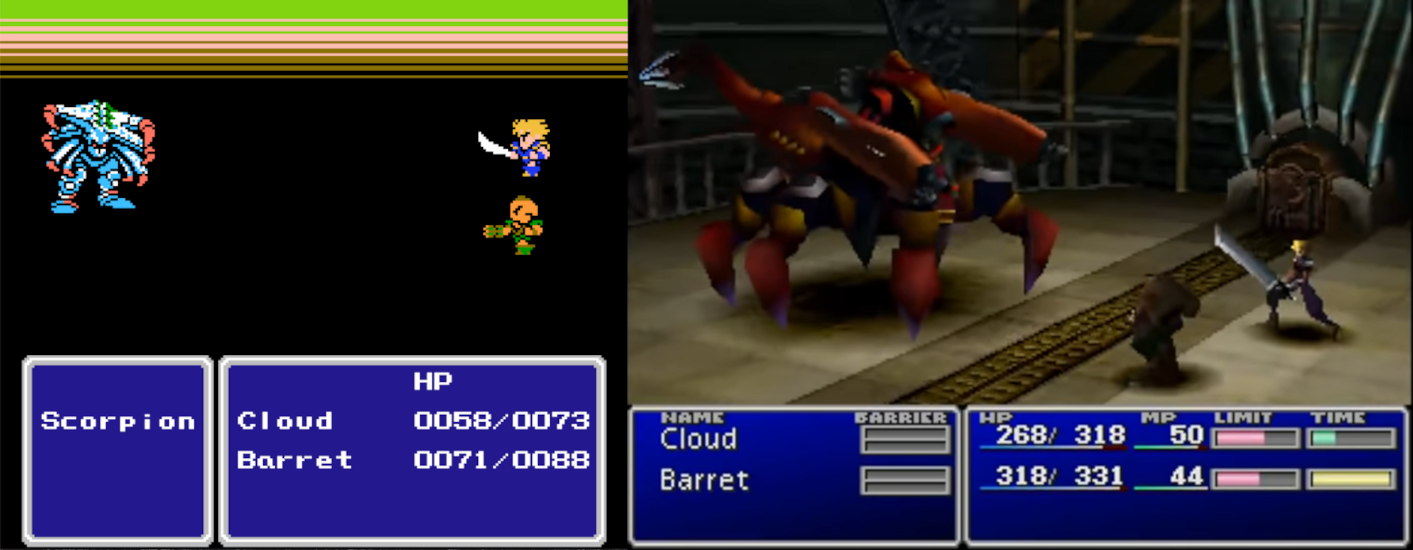
But it could be worse. The above was written based on the first and most common fan translation patch, created by a hacker called Lindblum. In addition to reinserting all of the original text, Lindblum made a few under-the-hood tweaks to make the game more balanced and player-friendly. Yes, some of those changes are a bit much (e.g. every shop sells every item in the game, including ultimate weapons), but without those tweaks, CFF7 is a digital torture device that won't let you out of the first dungeon without a good hour of grinding and save state abuse.
Even with Lindblum's invisible assistance, I wasn't able to get out of Midgar. I must have managed to screw up a flag somewhere because eventually, I couldn't go any farther. Shame - I would have liked to see how they mutilated Sephiroth.
Contrary to what some Western observers said in 2008, CFF7 is not some mind-blowing feat of engineering. I can only assume that these people were not familiar with what the ROM hacking scene was like in the late 2000s because games like this were becoming ever more common. People were moving beyond the simple "hardtype" hacks and puerile sprite swaps and building new games inside of existing ones. By the standard of that era, CFF7 is a game of above-average ambition and below-average execution.
But while CFF7 is a bad game, I'd argue that it's also an important game - maybe even worthy of a weird sort of respect.
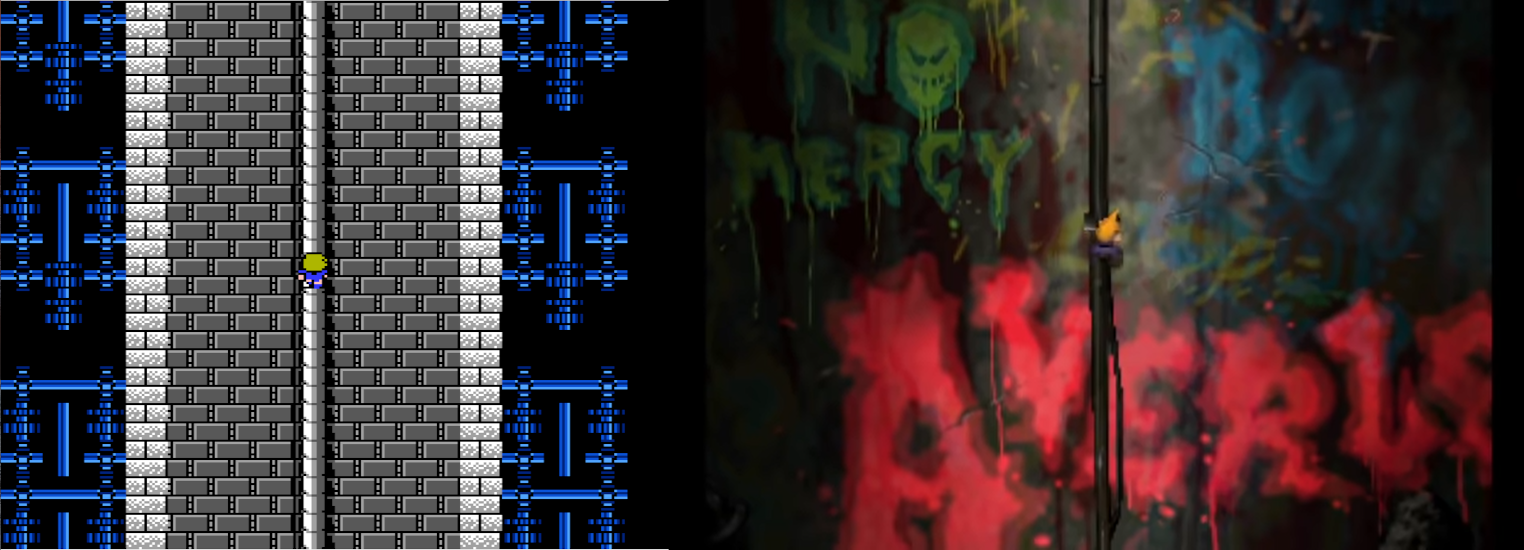
RPGs are very popular in mainland Asia. There's a stereotype about Asians and MMOs, but JRPG-styled games have an even longer history. Chinese-language RPGs with distinctively Chinese stories have been produced as far back as the 90s, with storied franchises such as Xuan-Yuan Sword and Legend of Sword and Fairy getting new games to this day.
Almost all of these games appeared solely on the PC. There have been a few odd exceptions (i.e. Legend of Wukong, a Softstar game first released on the Mega Drive), but games meant for the Chinese market are computer games almost by necessity. The expense and rarity of dedicated video game hardware - a problem exacerbated by the importation ban of the 2000s - forced developers to focus on the larger PC market.
This created a problem in the 90s when JRPGs lived on the consoles. Some of the most famous JRPGs of all time came out in an era when their Chinese fans had no meaningful way to obtain them. True, these games did occasionally get PC ports, such as the Eidos PC version of Final Fantasy VII which has since become somewhat rare. But then you hit the other problem: Language.
Chinese RPG fans have long had a problem similar to the problem English-speaking fans had in the 90s: The best games never came out in a language they understood. For Western fans, that meant muddling through a $100 import copy of Final Fantasy III using the few words of Japanese they picked up through their anime obsession. For Chinese fans, it meant turning to the bootlegs.
CFF7 is an artifact both of China's video game ban era and a time when the video game market was concentrated in a small number of countries. If it's not an impressive feat of digital engineering (or a "triumph of the human spirit," as one critic put it with characteristic hyperbole), it is a testament to how determined people are to get the things that they want.
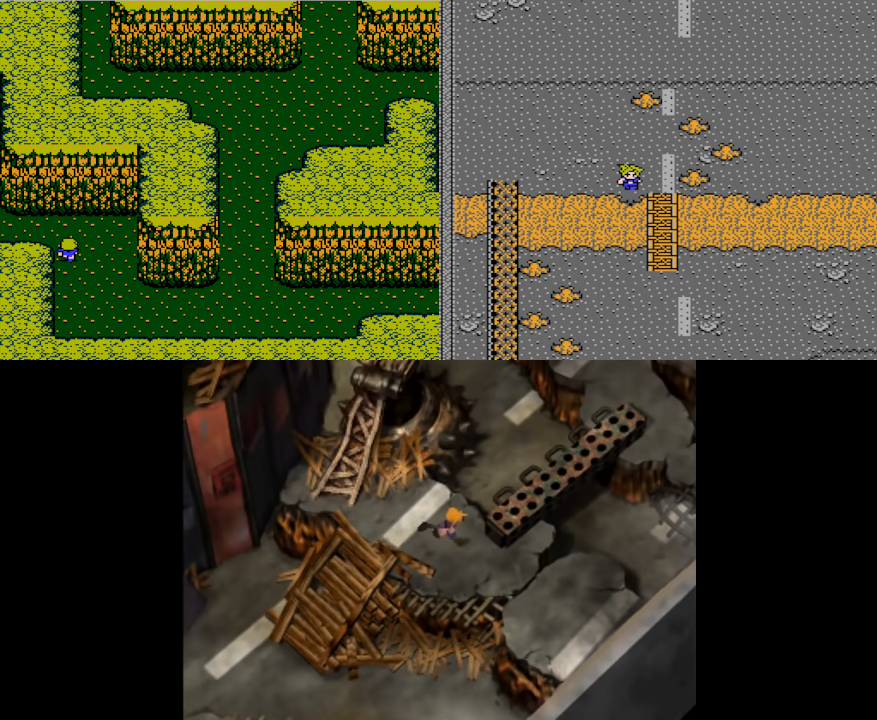
Let's return to those scamps in the ROM hacking scene for a moment, because their dedication never ceases to impress me.
Not long after CFF7 was dumped to the web, hackers began working on ways to make it better. The most profound improvement was the 2013 patch created by a team headed by Lugia2009, whose credits also include a hack and translation of an NES Chinese bootleg version of Pokemon Yellow.
CFF7 is an artifact both of China's video game ban era and a time when the video game market was concentrated in a small number of countries.
Lugia2009's patch builds off of Lindblum's original in many ways, with the goal being to substantially overhaul the game. The new version is more stable, features fully redrawn graphics to better resemble the style of the original game, and even adds some 8-bit versions of FFVII's background music to replace the generic BGM of the original bootleg. It also continues the ongoing quest to balance the game and make it play more like a Final Fantasy game.
If I'm being honest, it's still not a good game by any stretch - just a noble effort that comes down to too many fights against enemies with too much life. Still, if you're going to ignore my earlier advice and seek out CFF7, you might as well have the best possible version - and this is better in every way possible.
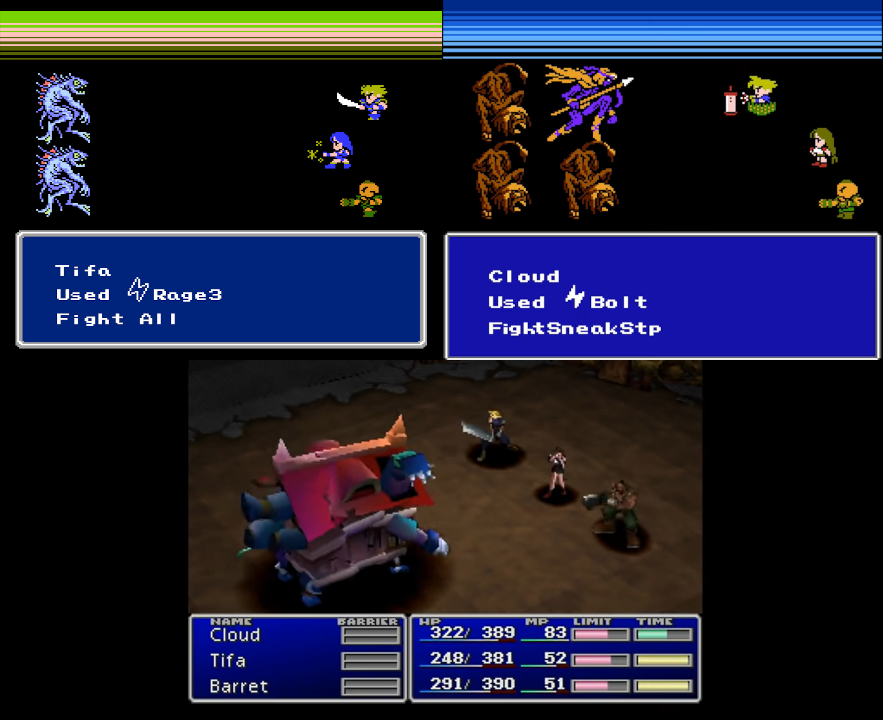
The main thing I took away from my time with CFF7 was a chance to reflect on the original. In previous articles, I suggested that Final Fantasy VII was a project in environmental storytelling, and this gave me the opportunity to test that hypothesis.
Playing an 8-bit game with the FFVII script is jarring. For whatever flaws existed in that story, it is far more sophisticated than what was the norm for the late 80s. By 1997, we were already moving past the simple monomyths and D&D-like campaigns of earlier eras and toward more cinematic storytelling. Contrasting a 90s story with 80s technology makes that blindingly clear.
If anything, though, that confirms my postulation. A good story will work regardless of the resources held by the storyteller. FFVII just doesn't stick the landing without that Square-Enix flair. Absent the highly detailed background and especially the ability for the characters to emote, it's not nearly as good.
That may be standard for the entire series. The strength of Final Fantasy has never resided in its writing, but in the entire package and how all the elements work together. Strip out the graphics design, music, and gameplay and replace them with lesser versions, and the dialogue and plot just aren't enough. Final Fantasy is a much more holistic experience, and this makes it effectively impossible to duplicate.
This isn't to say that people won't try to duplicate it, even if they don't have the same pedigree. Just ask Shenzhen Nanjing Technology.
